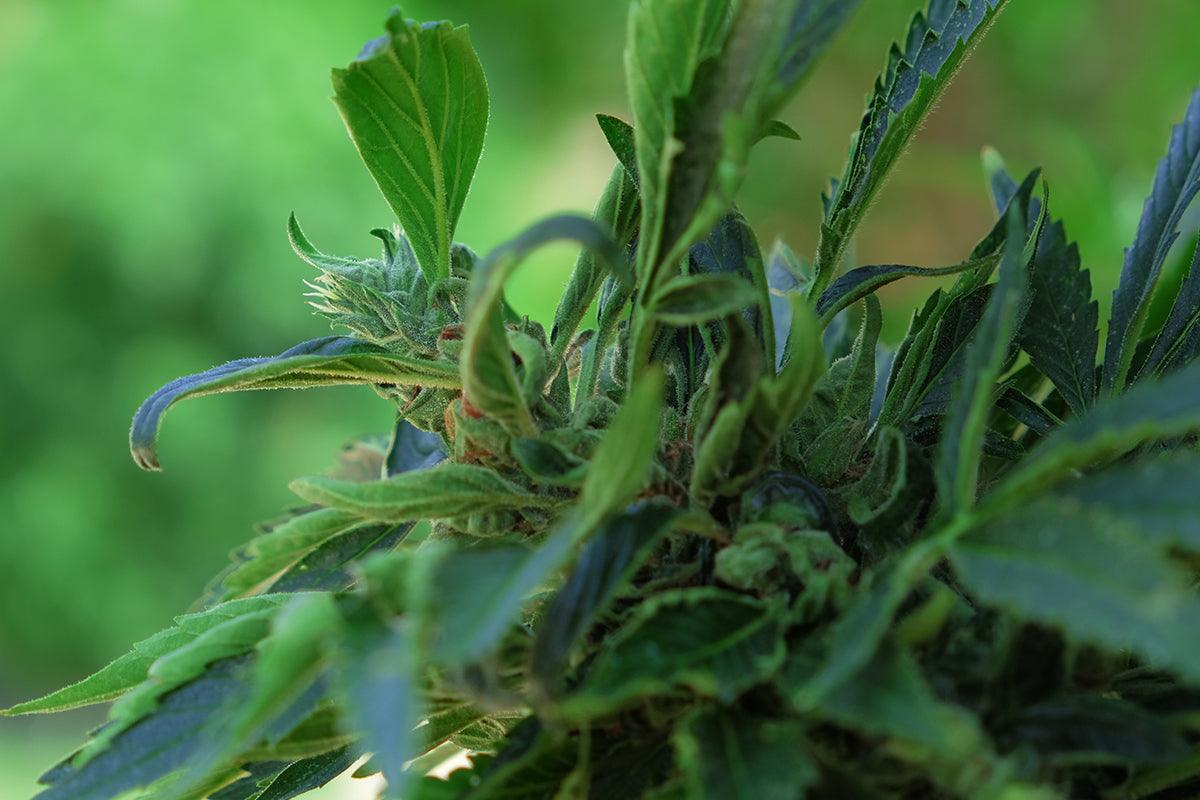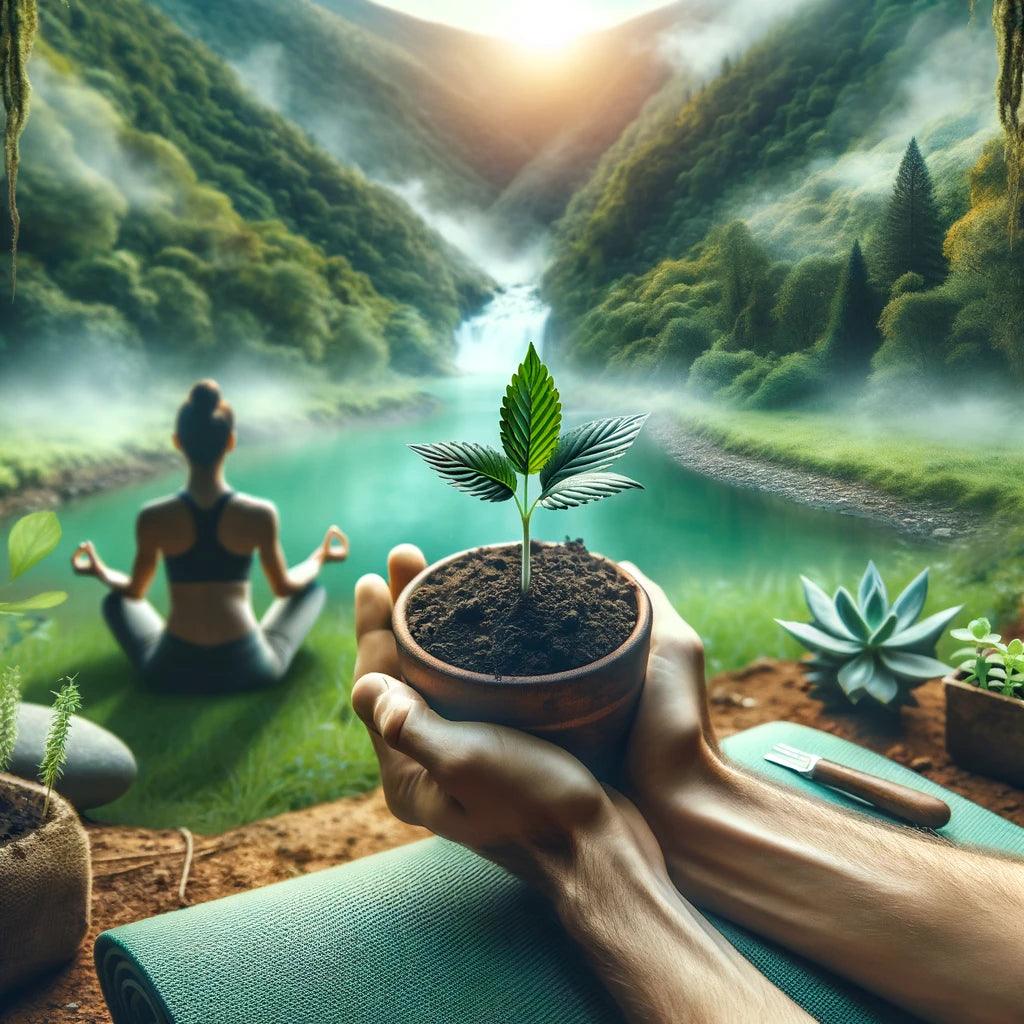You can use the most advanced cultivation techniques, the best performing grow boxes and the best lights on the market, but - if you don't know the anatomy of the cannabis plant - it will be almost impossible to complete the cultivation task successfully.
Marijuana is a complex plant and each part of it has a specific task. Knowing the appearance and needs of each component will certainly help in the success of cultivation!
The anatomy of the cannabis plant
What are the main elements of the cannabis plant? An adult cannabis plant is made up of:
- the roots , placed below the surface of the soil, have the double function of anchoring the plant and absorbing nutrients. The root zone is composed of a single tap root , which develops many secondary roots until it becomes a fibrous mass.
- The cotyledon is an embryonic leaf and represents the first set of leaves that appears after germination. The green appearance of the cotyledons is an indicator of the presence of chlorophyll, which allows the small leaves to conduct photosynthesis in the initial stages of growth. The first pair of true leaves will emerge from the first cotyledon.
- The main stem emerges from the roots and allows the cannabis plant to grow vertically. The stem is the primary vascular channel, transporting water and minerals from the roots. Secondary branches grow from the main stem from points called nodes: from each node a pair of branches arises on both sides of the stem.
- The fan leaves grow in pairs from the main stem and branches. They are the main photosynthesis tool available to the plant: they absorb all the available light, passing it to the phloem, or sieve tissue, which transports the energy throughout the rest of the plant.
- The bud is the flowering end of the female cannabis plant. Buds or nuggets, other names for cannabis flowers , grow on scattered points throughout the stems. Each bud is composed of calyxes, which are small drop-shaped clusters, inside which and in the surrounding area leaves grow.
- The pistils are commonly called "hairs" and are formed on the buds, therefore only on female plants. During the flowering period they change color from white to orange/red as the buds mature. Pistils are the primary outgrowth of the calyxes, and essentially serve to capture pollen.
- Trichomes produce the shiny, sticky coat of resin that covers all cannabis buds. As flowering progresses, the calyxes and surrounding leaves become covered in a blanket of tiny stems with mushroom-shaped ends. These tips change color from clear to white to amber during flowering.
Where do cannabinoids originate?
The most important elements of the cannabis plant are those that contribute to the production of cannabinoids and that provide the inflorescences with the effects that we know well. The flavor of marijuana is given by the resin, produced in the glasses through the pistils, and by the terpenes - which together with the essential oils - contribute to creating the distinctive flavor of each cannabis variety.
Cannabis terpenes
Terpenes are aromatic compounds contained in the cannabis plant and are responsible for the particular smell and flavor of each variety . The characteristics of cannabis are therefore not given only by the variety and the more or less massive presence of TCH and CBD, but are closely linked to the presence of terpenes. It is thanks to terpenes that some varieties of marijuana have hints of citrus, musk or eucalyptus and it is always thanks to terpenes if the effect of a given variety is more or less invasive for the body.
Terpenes are a group of molecules present naturally in many plant species and in some insect species, and their main characteristic is to give each plant its characteristic aroma . In the case of the numerous varieties of marijuana plants present in nature, the smell and typical fragrance of each of them are determined by the range of terpenes produced by the plant itself. Terpenes are produced inside trichomes , the glands that also produce THC, and their presence and composition varies based on environmental factors, the chemical composition of the soil and climatic conditions.
Why do plants produce terpenes?
Nature follows a perfect design and every element of living organisms has a precise function. As often happens in the plant world, terpenes are produced by plants to defend themselves from predators ; Thanks to their pungent aroma, marijuana plants are able to repel harmful insects and attract other benefits to promote pollination.
The amount and type of terpenes that a cannabis plant produces depends on various factors: the same strain does not necessarily produce the same aromatic compounds, due to factors such as climate, soil and fertilizers used, the age of the plant, and other elements.
The most interesting thing about terpenes, however, is that they work synergistically with cannabinoids . One confirmation of this is that some strains may have the exact same levels of THC and CBD, but their effects can be very different from each other. THC binds to receptors in our brain causing the psychoactive effects of cannabis ; a terpene can actively influence those brain receptors and how they work.
The medical cannabis industry, in particular, is interested in the effects of terpenes and their synergy with cannabinoids. By identifying the terpenes present in a given strain and studying their concentration and interaction with THC , it is possible to shape the herb to meet medical needs. For example, by adding limonene, a stimulating effect can be achieved; adding linalool gives a relaxing and sedative effect; adding beta-caryophyllene amplifies the analgesic effects of cannabis.
The pistils
A pistil is the female reproductive organ of the cannabis plant. For a normal home grower, the pistil is that "little hair" that protrudes from the calyx of a female flower. They can also be called stigmas.
When a pistil comes into contact with pollen from a male plant, the flower becomes pollinated. In this case, instead of focusing all its energy on producing more resinous flowers, the female plant begins to develop seeds. The cannabis will then become less potent and seeds will form.
Pistils tend to protrude from the nodes of young cannabis plants quite randomly, although they are sometimes more noticeable near the tops of the plants and are quite easy to spot. The calyx is the first part of the flower that forms when a plant reaches the flowering phase, obviously if it is a plant capable of generating flowers. The plant quickly develops a protective platform made up of small leaves, called sepals, which as a whole is called the calyx.
The calyx is designed to protect the plant's reproductive organs located between the sepals, and provide the flower with a stable base. While all flowering plants, male and female, have calyxes, when it comes to cannabis plants specifically, only the calyxes of female plants are of interest to the aspiring cannabis grower.
When growing cannabis, the goal is to obtain large terminal buds , which also include calyxes. This is not just any part, but the most important part, because the plant's reproductive organs, called pistils, and trichomes are found in the calyxes.
The pistils are where the characteristic long hairs, called stigmas, form. The stigmas are initially white, when the plant is in the initial flowering phase, then they become amber or yellow, and finally brown, as the flowering process progresses. Trichomes are resin-producing glands in which cannabinoids are formed, including the well-known psychoactive THC.
Cannabis essential oils
Hemp flower essential oil or hemp flower essence is an oil obtained by distillation from the female inflorescences and apical leaves of the cannabis sativa plant. It appears as a yellowish liquid containing many volatile compounds such as terpenes and terpenoids and variable quantities of delta-9-tetrahydrocannabinol depending on the variety of plant from which the oil is extracted and the intended use.
From an aspect that strictly takes into account the organic aspects, it is appropriate to point out that hemp oil is rich in omega 3 and omega 6 , contains another small percentage of different essential fatty acids and a dense concentration of vitamin E, B1 and B2 as well as traces of numerous other vitamins .
Thanks to the optimal ratio of the fatty acids it contains, in particular thanks to the right balance between omega 3 and omega 6 linoleic acid, hemp oil is considered a panacea for the body like numerous other antioxidants since in capable of maintaining a correct cellular balance and therefore promoting a healthy and continuous osmosis process capable of both detoxifying the body and heavily counteracting the accumulation of free radicals.
Furthermore, the omega 3 contained in the juiced seeds are of great help in the management of cardiovascular diseases , in the correct metabolisation of ingested fats, as well as in the inflammatory response to different stimuli.






